mike(swWash)
Hero Member
- Feb 6, 2008
- 755
- 1,433
- Detector(s) used
- Whites Spectrum XLT with about 1/4" of dust on it and can't even remember how t turn it on?!?!?
- Primary Interest:
- Prospecting
Here's what I've got done this week. It took about 4hrs to get this far. I hope to have time to finish it next week.
It's a 3" jet. I have no intention of using it right now but it was material I had laying around the shop and thought for my 1st try, why not. I need to pick up some 2 and 2 1/2" stainless exhaust pipe to build the one I'll use.
Step 1. Put 4 marks equal distance apart around the 3" pipe then drill. I used 1/8" sch40 pipe for the jets since it is about 1/4" i.d.
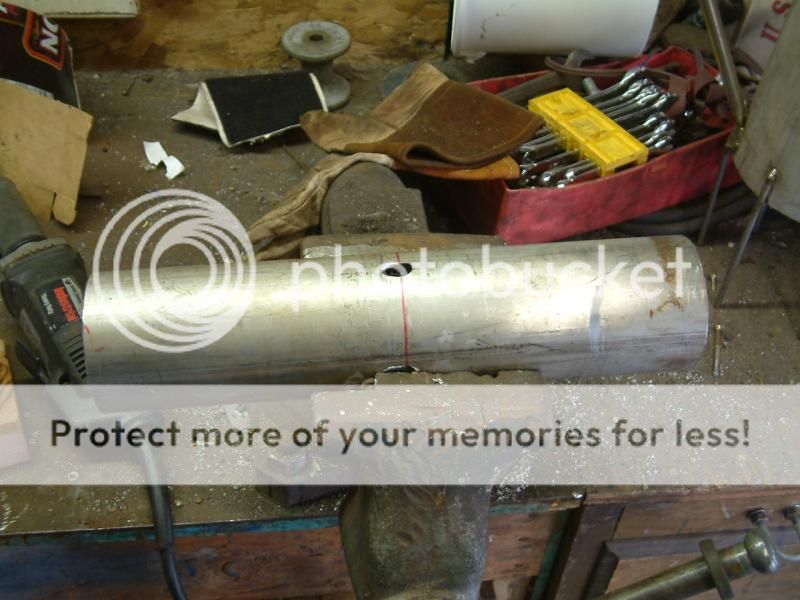 [/URL]
[/URL]
Step2. Cut a wedge at approx. 11degrees for use later.
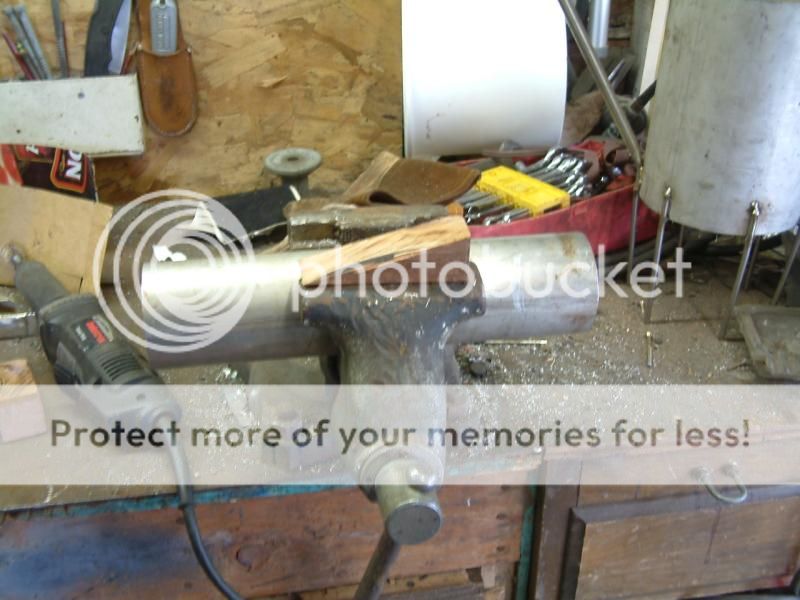 [/URL]
[/URL]
Step3. Insert bit in the hole and begin reaming the hole to the desired angle.
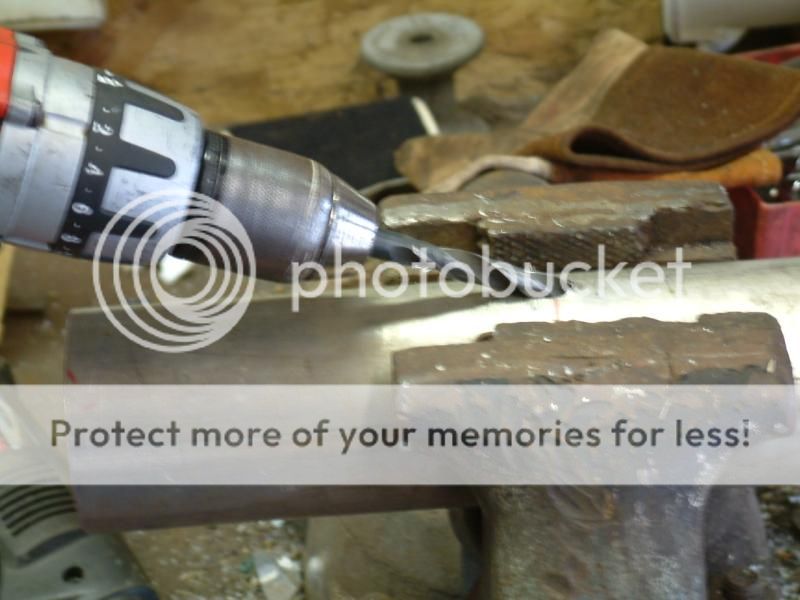 [/URL]
[/URL]
Step 4. Keep drilling until the hole is at the proper angle. Make sure you are lined up straight with the pipe.
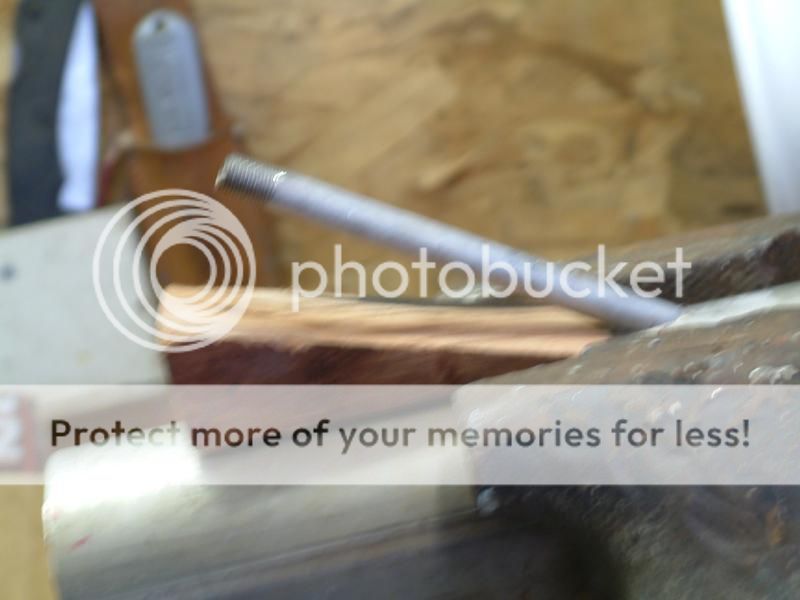 [/URL]
[/URL]
 [/URL]
[/URL]
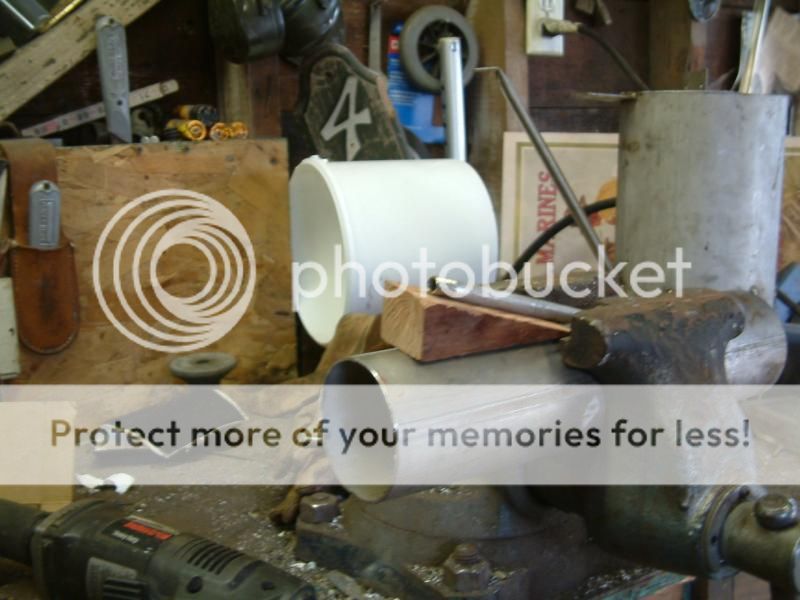 [/URL]
[/URL]
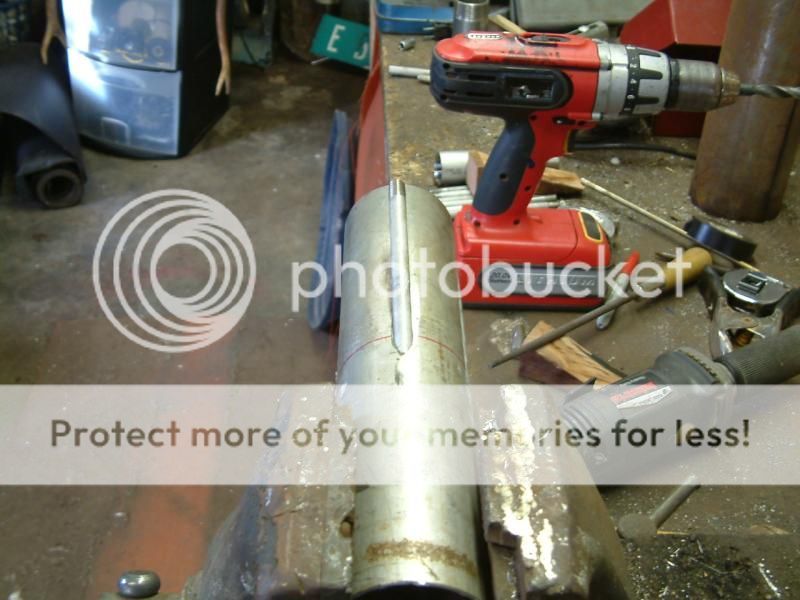 [/URL]
[/URL]
Step 5. Check hole alignment to be sure the jets will converge in the center.
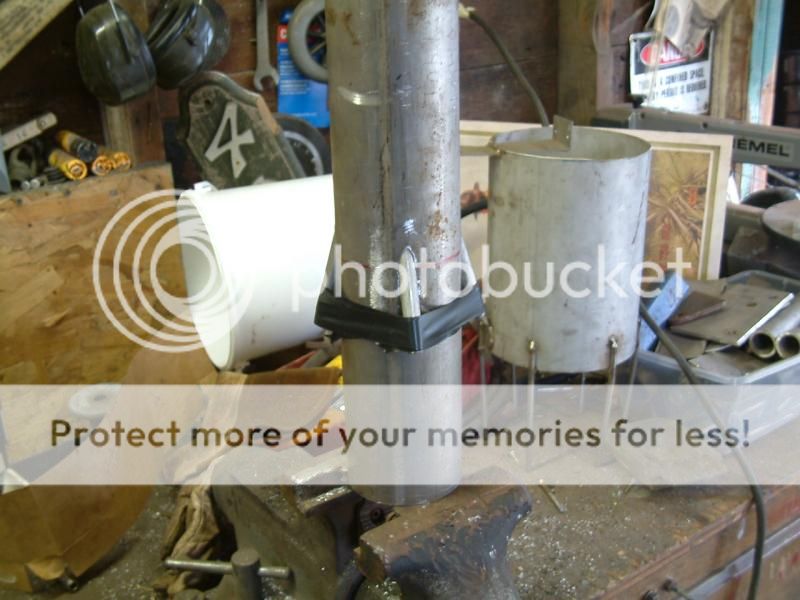 [/URL]
[/URL]
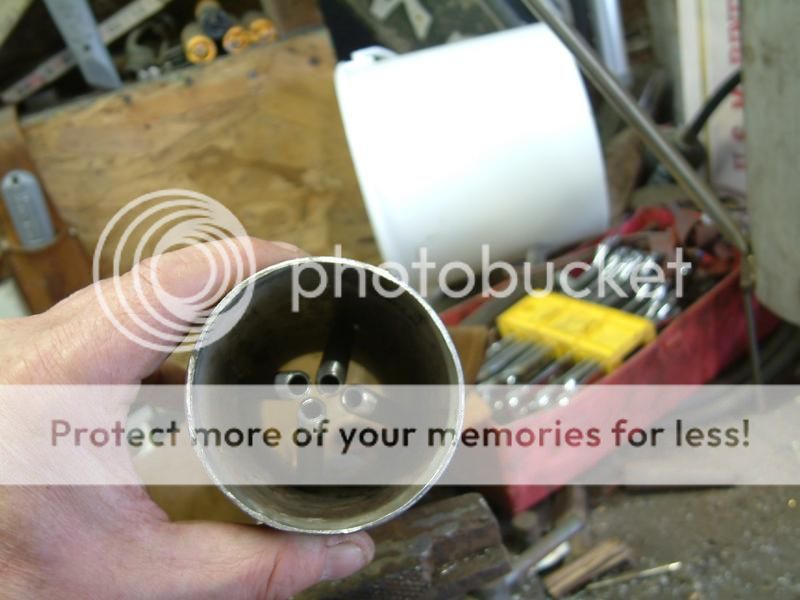 [/URL]
[/URL]
Step 6.This was the hardest part..... Insert small pipe into hole at the proper angle, mark it and cut it off as shown.
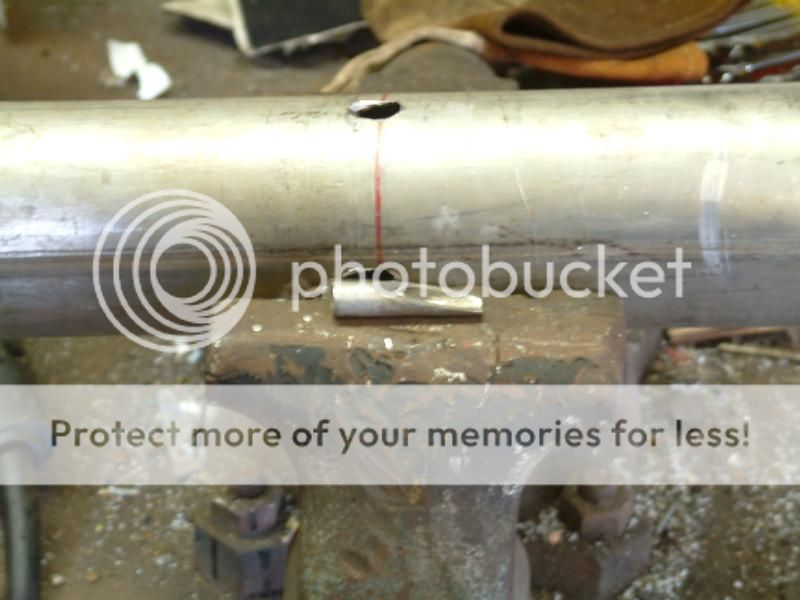 [/URL]
[/URL]
Step 7. Insert jets and weld to the 3" tube so the angle cut is flush with the inside of the pipe....my welds look like crap, but oh well they're sealed and solid.
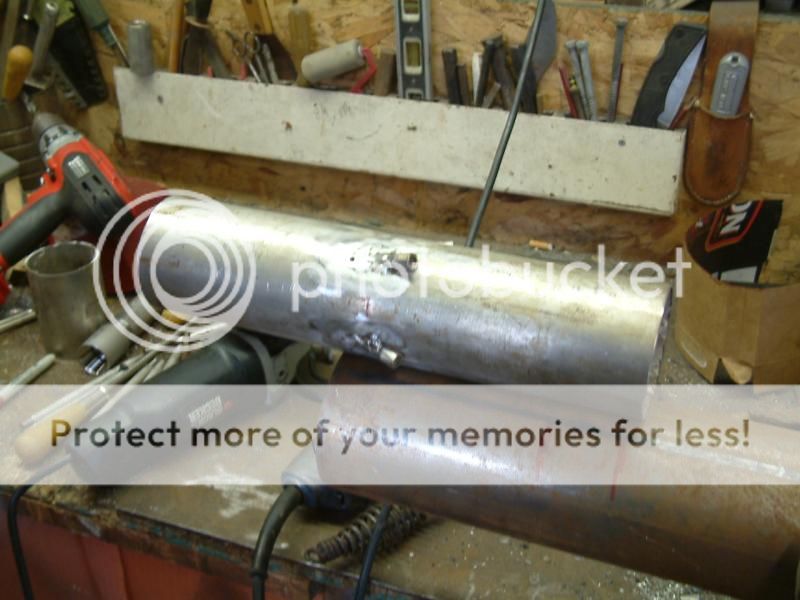 [/URL]
[/URL]
That's all I had time for this week.
Next I have to ream the 4" washers so the 3" pipe will fit tight and weld it up.
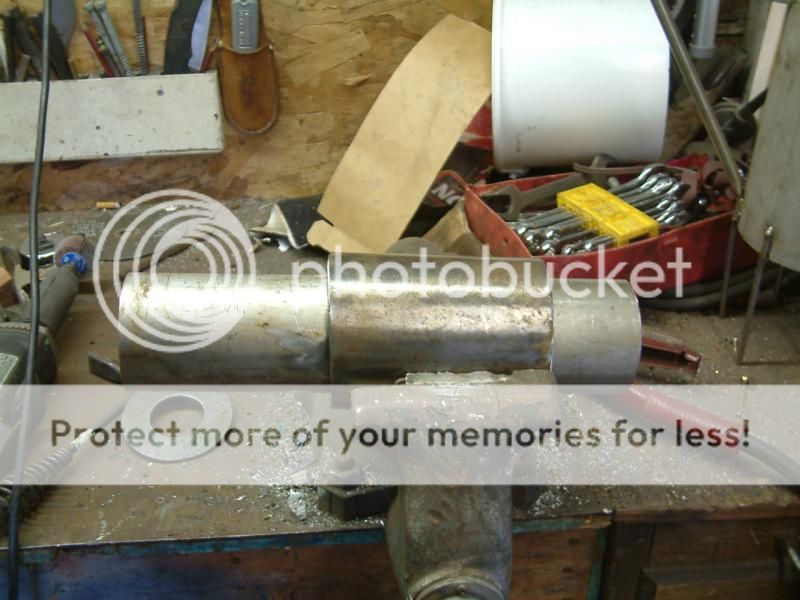 [/URL]
[/URL]
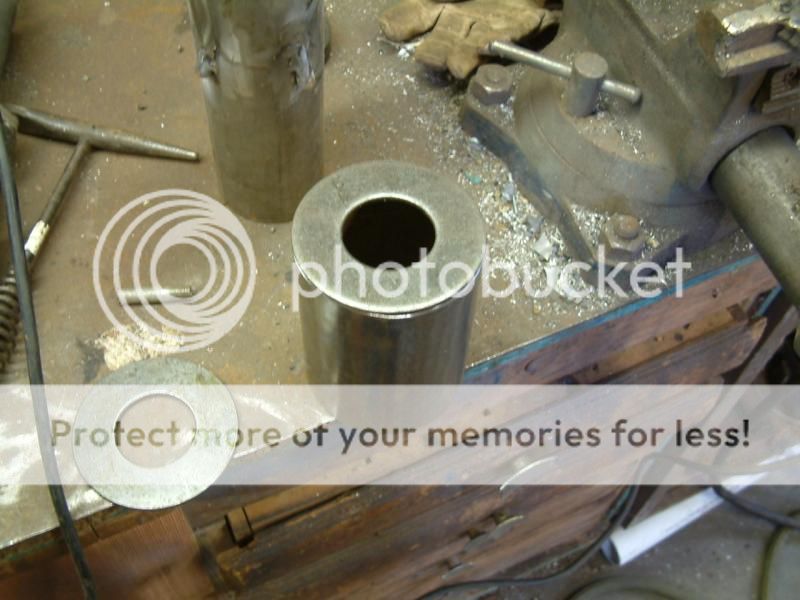 [/URL]
[/URL]
I still have to cut in and weld the pressure supply tee for the jet water at a 45 degree offset so no deadheading.
It's a 3" jet. I have no intention of using it right now but it was material I had laying around the shop and thought for my 1st try, why not. I need to pick up some 2 and 2 1/2" stainless exhaust pipe to build the one I'll use.
Step 1. Put 4 marks equal distance apart around the 3" pipe then drill. I used 1/8" sch40 pipe for the jets since it is about 1/4" i.d.

Step2. Cut a wedge at approx. 11degrees for use later.

Step3. Insert bit in the hole and begin reaming the hole to the desired angle.

Step 4. Keep drilling until the hole is at the proper angle. Make sure you are lined up straight with the pipe.




Step 5. Check hole alignment to be sure the jets will converge in the center.


Step 6.This was the hardest part..... Insert small pipe into hole at the proper angle, mark it and cut it off as shown.

Step 7. Insert jets and weld to the 3" tube so the angle cut is flush with the inside of the pipe....my welds look like crap, but oh well they're sealed and solid.

That's all I had time for this week.
Next I have to ream the 4" washers so the 3" pipe will fit tight and weld it up.


I still have to cut in and weld the pressure supply tee for the jet water at a 45 degree offset so no deadheading.
Last edited:


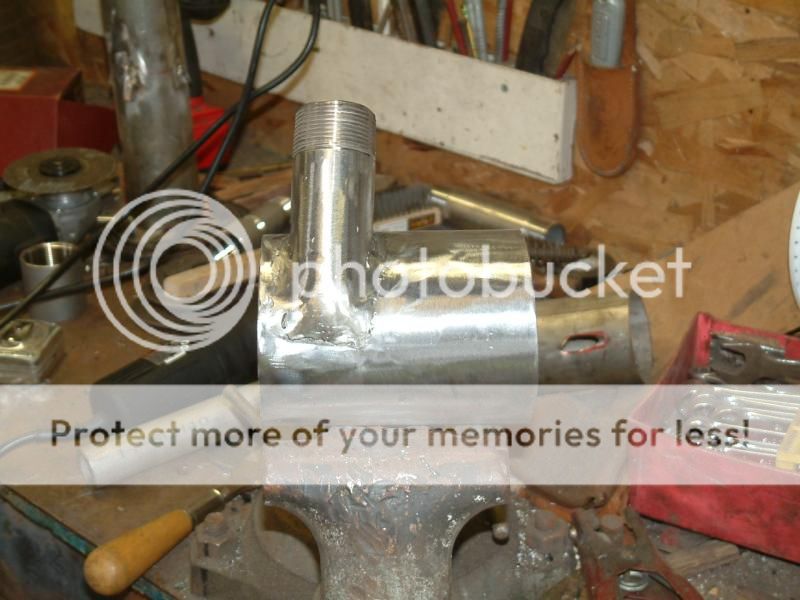
 . Sad part is after all the work in this 3" jet unit, it'll probably just hang on the wall of my shop until someday when I decide the 2 1/2" I'm building just isn't enough
. Sad part is after all the work in this 3" jet unit, it'll probably just hang on the wall of my shop until someday when I decide the 2 1/2" I'm building just isn't enough 



